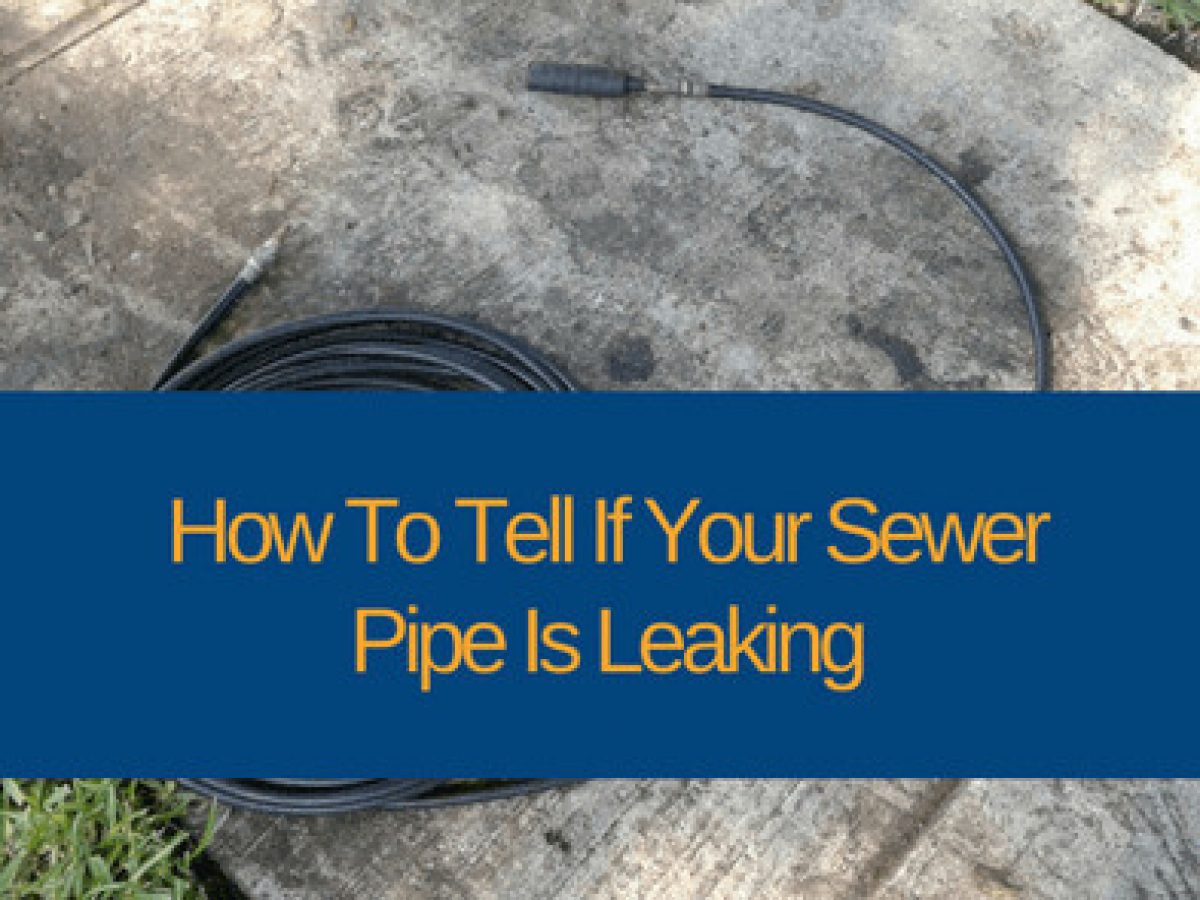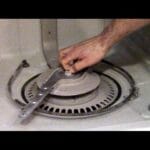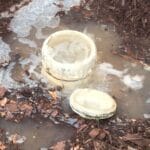Imagine waking up one morning to an unsettling smell or noticing damp spots on your walls or floors. These could be signs that a sewer pipe is leaking.
But how can you be sure? Knowing how to identify a leaking sewer pipe is crucial for maintaining the health and safety of your home. You don’t want to wait until the damage is extensive and costly. You’ll discover simple ways to detect leaks early, saving you time, money, and stress.
You’ll feel more confident in your ability to protect your home and avoid unnecessary headaches. So, let’s dive in and learn how to spot the warning signs before they turn into bigger problems.

Credit: inhouseplumbingcompany.com
Signs Of A Leaking Sewer Pipe
Wet spots on the lawn or unusual odors often indicate a leaking sewer pipe. Gurgling noises from drains can also suggest issues. Watch for signs of mold growth, which may mean moisture from a leak. If water bills rise unexpectedly, it might signal a hidden leak.
Discovering the signs of a leaking sewer pipe early can save you from a world of trouble. Imagine waking up one morning to an unpleasant odor wafting through your home or noticing slow draining in your bathroom sink. These are more than just minor inconveniences; they could be clues pointing to a bigger issue hidden beneath your home. By understanding these signs, you can take action before a minor leak turns into a major repair job. Let’s explore some key indicators that your sewer pipe might be leaking.Unpleasant Odors
A common sign of a leaking sewer pipe is the smell of sewage in your home. If you notice a persistent, foul odor that seems to come from your drains or basement, this could be a red flag. It’s easy to dismiss a bad smell, but ignoring it can lead to more significant problems. Think about the last time you noticed a bad smell in your house. Did you check if it was coming from the drains? Sewer gases can escape through cracks in your pipes and make their way into your living spaces. Addressing these odors promptly can prevent more severe health hazards.Slow Draining Fixtures
Have you noticed your sink or bathtub taking longer to drain? This might not just be a clog but a symptom of a leaking sewer pipe. When pipes are compromised, it can affect the flow of water, causing slow drainage. Consider the last time you stood waiting for the water to disappear from your sink. Did it feel like an eternity? Slow drains can be a nuisance, but they also signal a potential leak. Make sure to inspect your pipes if this issue persists.Mold Growth
Mold is not just an unsightly problem; it’s a sign of moisture where it shouldn’t be. If you spot mold on your walls or ceilings, a leaking sewer pipe might be the culprit. Mold thrives in damp environments, and a hidden leak provides the perfect breeding ground. Think back to when you first noticed mold in your home. Did you brush it off as a minor issue? Ignoring mold can lead to health problems and structural damage. If you see mold, investigate further to see if a sewer pipe leak is to blame. By paying attention to these signs, you can catch a leaking sewer pipe before it spirals into a costly disaster. What steps will you take to ensure your home stays safe and sound?
Credit: inhouseplumbingcompany.com
Visual Inspection Techniques
Detecting a sewer pipe leak involves checking for damp patches, unusual odors, or visible cracks. Water stains on walls or ceilings may signal trouble. Regular inspections help prevent costly repairs.
When faced with a potential sewer pipe leak, the first step is often a visual inspection. It’s a straightforward process, yet it can reveal a lot about the state of your plumbing. By using basic observation skills, you can spot signs of trouble before they escalate into major problems.Check For Cracks
Begin your inspection by looking for visible cracks along the sewer pipe. Cracks can appear as small lines or as larger splits on the pipe surface. If you spot any, it’s a clear indicator that the pipe may be compromised. Once, while checking my own basement, I noticed a hairline crack that was barely visible, yet it was the source of a small leak. It taught me the importance of paying attention to even the smallest details.Look For Wet Spots
Wet spots around your sewer pipes are a red flag. These can appear on the floor, walls, or any area surrounding the pipes. They might indicate a leak that’s seeping out unnoticed. I recall a time when I found a damp patch in my garden that wasn’t explained by recent rain. Upon closer inspection, it turned out to be a leaking underground sewer pipe. Are there unexplained wet areas in your home?Examine Pipe Joints
Pipe joints are common places for leaks to develop. Examine the connections where two pipes meet. Look for moisture or corrosion, which can signal a problem. During a routine check, I once found a joint that seemed fine, but on closer examination, there was a slight build-up of mold. It was a subtle hint that moisture was escaping. Have you checked your pipe joints lately? By using these visual inspection techniques, you can catch leaks early and save yourself from costly repairs down the line.Using Technology To Detect Leaks
Detecting a leaking sewer pipe can be challenging. However, technology has made it easier to pinpoint issues that might have gone unnoticed otherwise. From infrared cameras to acoustic listening devices, modern solutions offer precise ways to identify leaks without tearing up your property. Have you ever thought about how these technologies could save you time and money?
Infrared Cameras
Infrared cameras are like having super-powered eyes that see beyond the surface. They detect heat differences in your pipes, revealing hidden leaks. It’s surprising how effective they are. Imagine finding a leak without having to dig up the whole yard! This tool is especially useful in areas where access is limited, allowing you to focus on the specific problem area.
Acoustic Listening Devices
Sound is a powerful ally in detecting leaks. Acoustic listening devices pick up the sound of water escaping from your pipes. Think of it as a stethoscope for your plumbing. These devices are sensitive enough to detect even the smallest leaks. Have you ever noticed how quiet your home is when you listen for something specific? That’s exactly how these devices work.
Water Pressure Testing
Water pressure testing is a straightforward method that can reveal a lot about your plumbing system. By measuring the pressure in your pipes, you can identify inconsistencies that might indicate a leak. It’s like checking your tire pressure before a road trip; you want everything running smoothly. This method is simple yet effective, giving you peace of mind that your pipes are in good shape.
With these technologies, you can detect sewer pipe leaks efficiently and accurately. So, why wait for a small leak to turn into a big problem? Consider using these tools to protect your home and save yourself from costly repairs.
Professional Assessment Methods
When you suspect a sewer pipe leak, professional assessment methods can provide clarity and precision. These techniques are essential for detecting issues that are not visible to the naked eye. If you’re concerned about potential problems in your sewer system, here’s how experts can help identify them with reliable methods.
Video Camera Inspection
Have you ever wondered what’s really happening inside your pipes? A video camera inspection offers a clear view. Professionals insert a flexible, high-resolution camera into the pipes, allowing them to spot cracks, blockages, or leaks.
This method is non-invasive and provides real-time visuals of your sewer system. It’s like having an X-ray for your pipes, revealing hidden issues without digging up your yard. Next time you’re puzzled by plumbing problems, consider asking for a video inspection.
Hydrostatic Pressure Testing
Think of hydrostatic pressure testing as a stress test for your pipes. Experts seal off your sewer line and fill it with water to check for leaks. If the pressure holds steady, your pipes are likely intact.
If there’s a drop in pressure, it signals a leak. This method is particularly useful in identifying leaks in underground pipes. Remember, a simple pressure test can save you from costly repairs down the line.
Dye Testing
Dye testing is a straightforward way to detect leaks, especially in areas where water flow is visible. Professionals introduce a safe, colored dye into the water system. If the dye appears where it shouldn’t, it confirms a leak.
This method is effective for identifying leaks in specific locations, like around toilets or sinks. It’s a practical approach when you need a quick and clear indication of a problem. Next time you notice water where it shouldn’t be, think about dye testing as an option.
Each of these methods offers unique benefits, providing peace of mind and a clear path to repair. Which method do you find most intriguing for your situation?
Preventative Measures
Identifying a leaking sewer pipe early can prevent costly repairs. Look for water stains, unusual odors, or mold growth. Regular checks and maintenance can help keep plumbing systems intact.
Preventing a sewer pipe from leaking is not just about fixing issues when they arise; it’s about taking proactive steps to ensure they don’t happen in the first place. By focusing on preventative measures, you can save yourself from the hassle and expense of unexpected repairs. Let’s look at some practical actions you can take to maintain your sewer pipes in top condition.Regular Maintenance
Consistent maintenance is key to keeping your sewer pipes in good shape. Schedule professional inspections at least once a year to detect any early signs of wear or damage. You can also routinely clean your drains using safe, chemical-free methods like baking soda and vinegar to prevent buildup. A few years ago, I skipped my annual inspection and ended up with a costly repair bill. Lesson learned: an ounce of prevention truly is worth a pound of cure. Are you checking your pipes as often as you should?Pipe Insulation
Insulating your pipes can protect them from extreme temperature fluctuations. This is especially important if you live in an area with harsh winters. Insulation helps prevent pipes from freezing and cracking, which can lead to leaks. Consider using foam pipe covers or insulation tape, which are easy to install and affordable. Have you ever faced a burst pipe during winter? Insulation could be your best ally against such surprises.Tree Root Management
Tree roots can be a hidden enemy of your sewer pipes. They naturally seek out moisture and can infiltrate your pipes, causing blockages or even cracks. Regularly check the area around your sewer lines for signs of invasive roots. You might want to plant trees with less aggressive root systems or install a barrier to keep roots away from your pipes. Have you assessed the trees in your yard for potential risks? It’s a simple step that can save you from major plumbing headaches down the line. Taking these preventative measures can significantly reduce the risk of a leaking sewer pipe. By being proactive, you not only protect your home but also gain peace of mind. What steps will you take today to safeguard your sewer system?Repair And Replacement Options
Discovering a leaking sewer pipe can be stressful. But understanding repair options helps. Different methods suit various situations. Learn about trenchless repair, pipe relining, and full replacement.
Trenchless Repair
Trenchless repair is a minimally invasive method. It avoids digging large trenches. Experts use advanced equipment to access pipes underground. This method is efficient and less disruptive. It saves landscapes and surfaces from damage. Ideal for urban areas or gardens.
Pipe Relining
Pipe relining involves inserting a new lining into the old pipe. This lining hardens, forming a new pipe inside. It’s effective for minor cracks and breaks. Relining extends the pipe’s life without major excavation. It offers a cost-effective solution for small leaks.
Full Replacement
Full replacement is necessary for extensive damage. It involves removing the old pipe completely. New pipes are installed in its place. This method ensures long-lasting results. It’s more labor-intensive but sometimes unavoidable. Choose this for severely damaged or collapsed pipes.

Credit: westernrooter.com
Frequently Asked Questions
How Can I Identify Sewer Pipe Leaks?
Look for foul odors, water stains, and mold growth. These are common signs of a leaking sewer pipe.
What Causes Sewer Pipes To Leak?
Corrosion, tree roots, or physical damage can cause sewer pipes to leak. Regular inspection helps detect problems early.
Can Sewer Leaks Affect My Health?
Yes, sewer leaks can lead to mold and bacterial growth. These can cause allergies and respiratory issues.
How Do Professionals Detect Sewer Leaks?
Professionals use cameras and sound detectors. These tools help find leaks without digging up pipes.
Is Diy Sewer Leak Repair Safe?
DIY repair is risky. Incorrect fixes can worsen leaks. Professional plumbers ensure safe, effective repairs.
Conclusion
Detecting a sewer pipe leak is crucial for home safety. Quick action prevents damage. Regular checks can catch issues early. Listen for unusual sounds. Smell for any foul odors. Look for damp spots or cracks. These signs often suggest a leak.
Fixing leaks saves money. Protects your home. Keeps your family safe. Consult a plumber if unsure. Professional help ensures proper repairs. Understanding these signs helps maintain peace at home. No more stress about leaks. Your home stays secure and comfortable.
Remember, a little attention goes a long way in preventing big problems.





